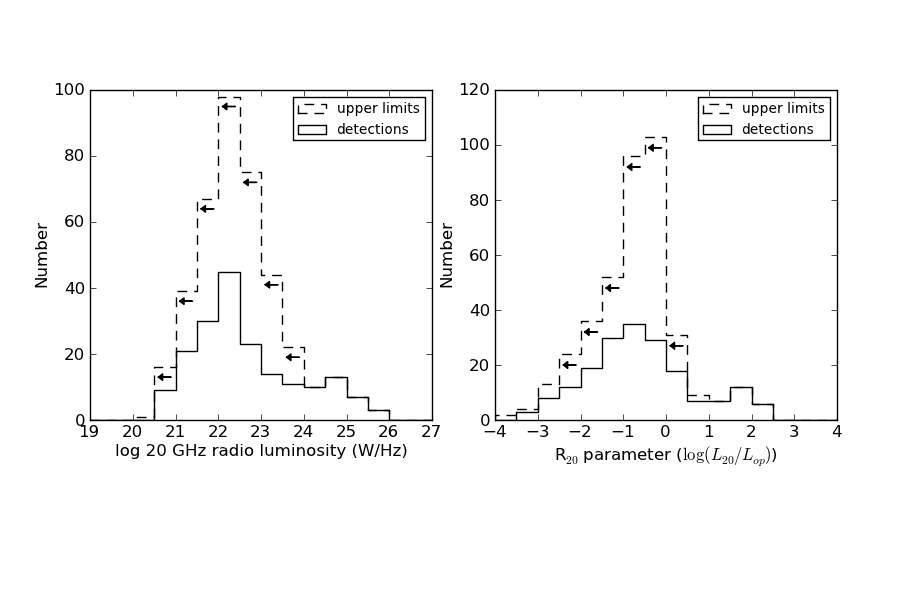| Description: | Quasi-Stellar Objects (QSOs) are often classified into two broad categories; radio-loud and radio-quiet, but the underlying distribution of radio luminosities has long been debated in the literature. There are two opposing views; the first is that the distribution is bimodal with approximately 5-10% of QSOs being radio-loud, and the second is that there is a broad, continuous distribution with no clear dividing line between radio-loud and radio-quiet QSOs. Resolving this issue can provide insight into the physics associated with forming radio jets. A bimodal distribution suggests that there are two intrinsically different classes of QSOs, only one of which is able to become a strong radio source, while a continous distribution suggests that all QSOs have low-luminosity radio sources which become stronger during episodes of unusually high activity.
We have obtained 20 GHz observations using the Australia Telescope Compact Array (ATCA) for a large sample of QSOs to investigate whether the luminosity distribution is bimodal. High frequency observations ensure that we pick up the central core component of the QSO and hence see the most recent activity. At lower frequencies the observed emission is often dominated by large-scale radio lobes, which could be relics of past activity integrated over large timescales, thereby confusing our results. The resulting distributions shown here confirm that neither the radio luminosity distribution nor the distribution in radio-loudness (the ratio of the radio to optical luminosities termed the 'R' parameter) are bimodal.
|

